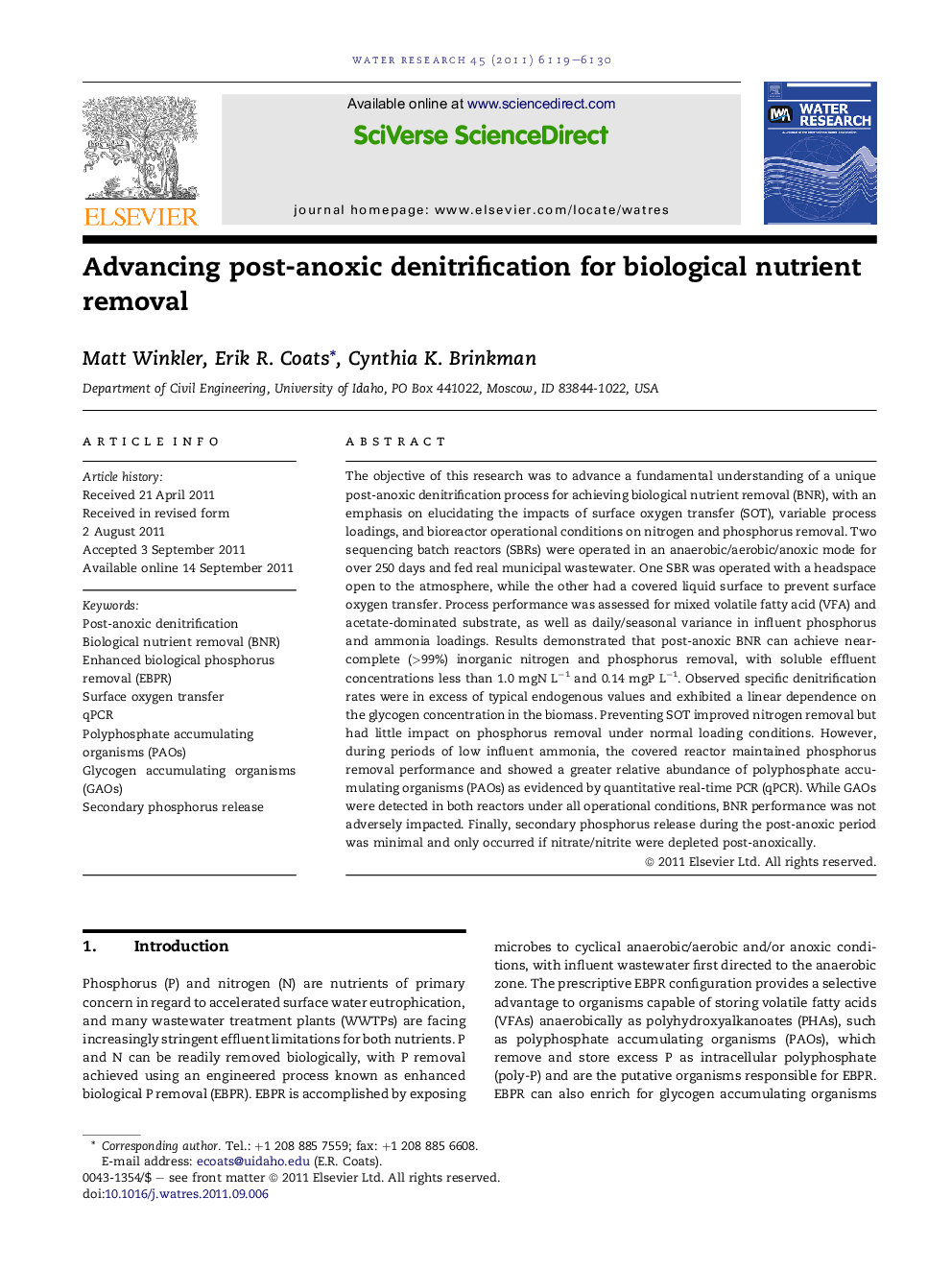| Article ID | Journal | Published Year | Pages | File Type |
|---|---|---|---|---|
| 4482695 | Water Research | 2011 | 12 Pages |
The objective of this research was to advance a fundamental understanding of a unique post-anoxic denitrification process for achieving biological nutrient removal (BNR), with an emphasis on elucidating the impacts of surface oxygen transfer (SOT), variable process loadings, and bioreactor operational conditions on nitrogen and phosphorus removal. Two sequencing batch reactors (SBRs) were operated in an anaerobic/aerobic/anoxic mode for over 250 days and fed real municipal wastewater. One SBR was operated with a headspace open to the atmosphere, while the other had a covered liquid surface to prevent surface oxygen transfer. Process performance was assessed for mixed volatile fatty acid (VFA) and acetate-dominated substrate, as well as daily/seasonal variance in influent phosphorus and ammonia loadings. Results demonstrated that post-anoxic BNR can achieve near-complete (>99%) inorganic nitrogen and phosphorus removal, with soluble effluent concentrations less than 1.0 mgN L−1 and 0.14 mgP L−1. Observed specific denitrification rates were in excess of typical endogenous values and exhibited a linear dependence on the glycogen concentration in the biomass. Preventing SOT improved nitrogen removal but had little impact on phosphorus removal under normal loading conditions. However, during periods of low influent ammonia, the covered reactor maintained phosphorus removal performance and showed a greater relative abundance of polyphosphate accumulating organisms (PAOs) as evidenced by quantitative real-time PCR (qPCR). While GAOs were detected in both reactors under all operational conditions, BNR performance was not adversely impacted. Finally, secondary phosphorus release during the post-anoxic period was minimal and only occurred if nitrate/nitrite were depleted post-anoxically.
► Glycogen-drive post-anoxic BNR can accomplish near-complete N and P removal. ► Glycogen oxidization for denitrification does not compromise EBPR. ► The SDNR exhibits a positive correlation with glycogen concentration. ► A mixed VFA substrate supports a higher PAO fraction than an acetate substrate.
